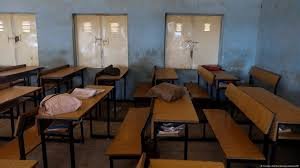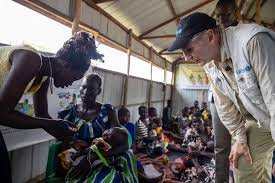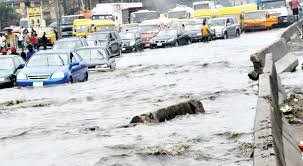
A deserted classroom in Zamfara State — a stark reminder of Nigeria’s unfulfilled promise to make schools safe for every child. (Image: Internet)
ZAMFARA, Nigeria – Eleven years after the world was jolted by the abduction of over 270 schoolgirls from Government Girls’ Secondary School, Chibok, in Borno State, one question continues to haunt Nigeria’s conscience: Are northern schools any safer today?
Despite billions of naira committed to the Safe Schools Initiative (SSI) — a programme launched in 2014 to prevent another Chibok-style tragedy — insecurity still grips classrooms across northern Nigeria. From Zamfara to Katsina, Sokoto to Niger, fear has replaced learning, and the dream of education is fading for thousands of children.
In this report, Hussaini Ibrahim investigates how poor implementation, weak accountability, and relentless violence have turned the promise of safe learning into an unfulfilled pledge.
A Ghostly Silence in Zamfara’s Abandoned Schools
In Maru Local Government Area of Zamfara State, the once-lively Government Day Secondary School Dansadau now lies in ruins. The classrooms are empty, the blackboards faded, and the walls overtaken by weeds.
“We closed the school two years ago after bandits abducted teachers from a nearby community,” said a teacher who requested anonymity for safety reasons. “Most of us fled to Gusau. We’re still afraid to return.”
His words capture the despair across northern communities where schools have become soft targets for armed groups. Parents hesitate to send their children to school, while teachers constantly request transfers to urban centres for safety.
According to the Zamfara State Universal Basic Education Board (SUBEB), more than 200 public schools remain shut in volatile areas such as Maradun, Shinkafi, and Birnin Magaji.
“Some schools were burnt down; others turned into camps for displaced persons,” a senior official at the Zamfara Ministry of Education told Africa Health Report (AHR). “Children who should be learning are now roaming the streets or working on farms to survive.”
He added that attempts to reopen schools have been largely unsuccessful.
“Security agencies advised against reopening schools in high-risk zones. Even when we posted guards, bandits still attacked. The state alone cannot handle this without federal support.”
‘I Just Want to Learn Again’ — The Voices of Lost Childhoods
In Katsina State, fifteen-year-old Abdullahi Musa, a Junior Secondary School student, has not attended class since early 2023 after his school in Batsari Local Government Area shut down due to bandit attacks.
“I used to love going to school every morning,” Abdullahi recalled softly. “But everything changed when gunmen started attacking nearby villages. One day, they kidnapped people in the next town, and our teachers told us not to come again until it’s safe.”
His voice trembled as he described his longing for normalcy.
“Sometimes, I still read my old notes at night,” he said. “My father says it’s too dangerous to go back. I just hope one day we can return. I don’t want to forget what I’ve learned.”
Abdullahi’s dream of becoming a doctor now hangs in the balance — a reflection of the silent despair shared by thousands of displaced schoolchildren across Katsina, Zamfara, Sokoto, Kebbi, and Niger states.
The Safe Schools Initiative: A Dream Deferred
The Safe Schools Initiative was launched in May 2014 amid global outrage following the Chibok kidnappings. With strong international support, including contributions from UNICEF, the U.K., and Norway, the initiative aimed to:
Secure schools in high-risk zones with perimeter fencing, security training, and surveillance equipment.
Relocate vulnerable schools to safer areas.
Build community-based early warning systems.
Nigeria’s government pledged $10 million, matched by private and international donors.
Yet, over a decade later, the situation has barely improved. In 2021, the Federal Government relaunched the initiative under the National Plan on Financing Safe Schools (2021–2023) with a projected budget of ₦144.8 billion, but many states — especially in the North-West and North-Central — say they’ve received little or no funds.
Why the Safe Schools Initiative Failed
According to Dr. Kabiru Ali, an education policy analyst at Bayero University, Kano, the concept of Safe Schools was noble — but its implementation has been chaotic.
“The idea was to create a protection framework around learning centres,” he explained. “But what we’ve seen is fragmented execution — states doing their own thing without coordination. The federal government failed to build a monitoring and evaluation system tied to funding.”
Dr. Ali warned that the crisis is widening Nigeria’s education inequality. Citing the UNICEF 2024 Education Report, he noted that Nigeria now has over 18.3 million out-of-school children, with more than 70 percent living in the North.
“Every time a school closes because of insecurity, it’s not just a building that shuts down — it’s a future that gets suspended,” he said. “The Safe Schools Initiative must be restructured to empower local communities. Parents, traditional rulers, and vigilante groups should be part of the protection network.”
Where Did the Money Go?
Civil society groups have raised serious concerns about transparency in the Safe Schools programme. A 2023 audit by the Civil Society Action Coalition on Education for All (CSACEFA) found that many northern states allocated less than five percent of their education budgets to school safety.
In rural areas, security fences are half-built or made of straw, and untrained guards often watch over hundreds of pupils with no communication tools.
“Billions were announced for Safe Schools, but only a handful of schools benefited,” said Dr. Aliyu Usman, a security and education consultant. “The problem isn’t funding — it’s misuse. We need independent audits, and the findings must be public. Parents deserve to know where the money went.”
Dr. Usman said without transparency, future funding will face the same fate.
“People must see tangible protection — not just reports and workshops in Abuja.”
Government Response and Ground Realities
The Federal Ministry of Education maintains that implementation of the Safe Schools Plan is ongoing. In a statement earlier this year, the ministry said vulnerability assessments had been completed in 14 pilot states, and the Nigeria Security and Civil Defence Corps (NSCDC) had begun training School Protection Squads.
However, education advocates say progress remains largely cosmetic.
“Training a few squads does not translate to safety when entire regions remain under siege,” said Dr. Usman. “We need visible, measurable change — schools reopening, pupils returning, and communities feeling safe.
In many parts of Zamfara and Katsina, lessons are now held only in the mornings to reduce risk, and children are taught to flee into nearby bushes at the first sound of gunfire.
The fear is constant, the silence deafening.
The Cost of Lost Learning
The prolonged closure of schools threatens to reverse decades of progress in education. Experts warn that the North’s already low literacy rates could deteriorate further, fuelling poverty and insecurity.
“If we abandon education, we will raise another generation vulnerable to extremism and crime,” Dr. Ali cautioned. “Every child out of school today is a potential casualty of tomorrow’s instability.”
He stressed that safeguarding education is not just a security issue — it’s a development priority.
“Protecting schools is protecting Nigeria’s future.”
Pathways to Safer Schools
Experts and civil society leaders agree that the Safe Schools Initiative needs urgent reform, guided by transparency, community participation, and sustainable funding.
Dr. Usman proposed a three-step strategy:
Community-led Security Committees that involve local leaders, parents, and security agencies.
Real-time Monitoring of education security budgets to prevent diversion of funds.
Emergency Education Access programmes for displaced children through mobile classrooms and digital learning.
“The federal government should work directly with communities,” he said. “They understand the terrain better and can provide local intelligence to prevent attacks.”
Dr. Ali added that technology could enhance response.
“Simple tools — like solar communication devices and emergency alert systems — can save lives. It doesn’t always require big budgets, just smart planning.”
A Call to Protect the Future
For thousands of children like Abdullahi Musa, the dream of returning to school remains uncertain. But the experts insist the situation is not hopeless.
If Nigeria fully implements the Safe Schools Plan with transparency, accountability, and genuine community engagement, the tide could turn.
“Security shouldn’t end at the school gate — it should start within the community,” Dr. Ali said. “Once children and teachers feel safe, learning can thrive again.”
As Nigeria marks another year since the Chibok tragedy, the haunting legacy persists — a reminder that protecting education requires more than promises. It demands action, accountability, and empathy for every child still waiting for the chance to learn without fear.
“I still believe school can change my life,” said Abdullahi, his eyes bright with hope. “If the government protects us, I will be the first to go back.”




